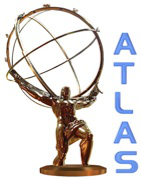-
Objects definition, performance studies and optimisation.
The section is devoted to the optimisation and study of the objects, with particular focus on:
1) electron and muon isolation criteria: optimisation and scale factor evaluation;
2) migration to rel 18 and muon definition (3rd chain versus staco comparison?)
3) b-tagging algorithm study, performance and optimisation;
4) Standard missing ET optimisation: parametrisation as a function of vertices, pile-up modelling, missing Et significance studies;
5) Track MET studies: quality criteria for Track MET, use of the module and the direction of the track MET variable, use in high pile-up environment;
6) JEts, forward jets, pile-up and energy scale systematics, can we improve the treatment of the out of time pile-up and the transition region problem?
-
Background reduction and data driven estimation.
1) Selection criteria for rejection of reducible background.
a) W+jets, isolation and missing Et cuts, reduce the systematic error of the fake factor method, try a different, less systematic affected, approach: same sign control region, isolation variable shape fit.
b) Drell-Yan: shape sensitive reweighting procedure at low missing ET, evaluation of the systematics, reduction of systematics uncertainties of the ABCD method;
c) top: define new control region to constraints b-tagging scale factor, try a full top event reconstruction using sub-threshold jets, use anti-btagging for sub threshold jets.
d) dedicated, multilepton selections for Wgamma, Wgamma* and W+J/Psi background to use as a control region or to assign a systematics to MC predictions in signal region).
-
The lnulnu final state.
1) Cut based analysis optimisation at low Higgs mass; 2) approach to low pT: keeps the two bin statistically combined approach? 3) WW and top normalisation strategy;
4) MVA analysis: BDT input variables choices, use ME output as a further input to BDT? Treatment of shape and finite MC statistics systematics; 5) fermiophobic Higgs
analyses. -
The lnuqq analysis and theoretical issues for signal and background for the lnulnu and lnuqq channel.
1) Theoretical error on the WW background shape variables: mT, BDT inputs, constraint WW normalisation also at low mass?
2) theoretical error on the top extrapolation parameters, efficiency of the selection cuts and systematics on the BDT input variables;
3) Signal theoretical error, finite top mass effect on the Higgs pT, interference with the gg->WW background, heavy Higgs line shape implementation; 4) theoretical uncertainties on the diboson backgrounds; 4) The lnuqq analysis strtaegy: high mass optimisation, MVA techniques in the lnuqq channel, VBF topology at low mass; 5) background parametrisation, implementation in the combination architecture. -
Systematic treatment, statistics approach and MC needs.
1) Treatment of systematics error in the cut flows, plots and fit; 2) systematic error presentations (event yield cut variation versus prefit error and covariance matrix); 3) shape uncertainties for systematics that are not implemented as a global event weight; 4) MC samples needs for signal and background (dibosons, W+J/Psi, W+gamma*), filtering criteria for backgrounds with large cross section: Z+jets (high and low mass), W+jets, top, W+gamma; 5) MC signal production with last PowHeg implementation; 6) mc12 validation status.
Choose timezone
Your profile timezone:

